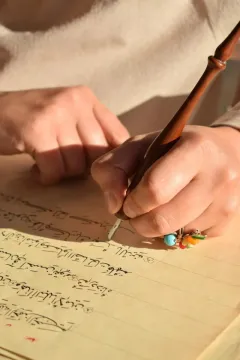The Maltese Language: An Exploration of Linguistic Heritage

The malt language, or “Maltese language,” is a fascinating topic that deserves to be explored in depth. The Maltese language is not only a reflection of Malta’s complex history, but it also represents a unique cultural crossroads in the Mediterranean. In this article, we will delve into the origins, evolution, structure, and impact of the malt language on Maltese culture and beyond.
Origins of Malt Language
The Maltese language has its roots in Latin, influenced by Arabic and Sicilian. After the Arab conquest of Malta in the 9th century, the island was subjected to significant Arabic linguistic influence. This period left an indelible mark on the Maltese vocabulary, incorporating many Arabic words into the language.
Over the next few centuries, Malta was conquered by the Normans and then by the Knights of St John, bringing with them European influences, mainly Italian and French. These successive waves of conquest shaped the malt language, which became a rich and vibrant blend.
Evolution of Malt Language
Over the centuries, the Maltese language has evolved into what it is today. In the beginning, the spoken language was mainly oral, with little written documentation. It was not until the 19th century that the first Maltese texts began to appear, thanks in part to the efforts of some Maltese intellectuals who wanted to codify and standardize the language.
The language was officially recognised as the national language of Malta in 1934, a watershed moment for its status and preservation. At that time, significant efforts were made to promote the Maltese language in education, literature and the media.
Structure and Characteristics of Malt Language
The Maltese language is unique because of its varied structure and influences. It uses the Latin alphabet, but some letters and sounds are adapted to reflect the phonetic peculiarities of Maltese. For example, Maltese uses characters like "ħ" and "ġ", which are not found in classical Latin languages.
Vocabulary
The Maltese vocabulary is a fascinating mix. About 40% of its lexicon comes from Arabic, while 30% comes from Italian and Sicilian. The rest is made up of words of English, French and other languages. This makes the Maltese language a living and adaptable language, capable of evolving with time and external influences.
Grammar
Maltese grammar has similarities with Arabic, particularly in word structure and root usage. This results in words that are formed from triliteral roots, a feature also found in other Semitic languages. However, Maltese grammar has been heavily influenced by Latin and Romance languages, giving it a unique structure.
Malt Language in Culture
The Maltese language is much more than just a means of communication; it is a vehicle for cultural identity. It conveys traditions, stories and values that are dear to the Maltese people.
Literature
Maltese literature, although still young compared to other European literatures, is rich and varied. Poets and writers such as Dun Karm Psaila and Anton Buttigieg have played a key role in the development of literature in Maltese. Their works reflect the beauty of the language and explore universal themes through the Maltese prism.
Media and Education
The Maltese language is also present in the media. Newspapers, television channels and radio stations broadcast in Maltese, contributing to its vitality and modernity. Education in Maltese is essential for the transmission of the language to the younger generations, thus strengthening the national identity.
Challenges and Perspectives
Despite its evolution and vitality, the Maltese language faces challenges. The influence of English, which is also an official language of Malta, is pervasive. In education, business and the media, English is often favoured, which can lead to a certain form of diglossia. This means that although Maltese is widely spoken, English can sometimes be perceived as more prestigious.
Preservation Efforts
To counter this trend, initiatives have been put in place to promote the Maltese language. Language associations work to encourage the use of Maltese in various contexts, including in contemporary literature and the arts. The Maltese government also supports programmes to strengthen the teaching of Maltese in schools.
Malt Language Internationally
The Maltese language is not only confined to Malta; it has also gained international exposure. With a Maltese diaspora that extends across the world, the Maltese language is spoken in communities in Australia, the United States and the United Kingdom. Cultural and linguistic events are organised to promote the Maltese language and culture abroad.
Conclusion
The Maltese language is a cultural treasure that deserves to be celebrated and preserved. Its complex history, rich vocabulary and unique characteristics make it a fascinating language that symbolises the Maltese identity. As Malta continues to evolve in a globalised world, it is essential to value and promote the Maltese language. In celebrating the Maltese language, we also celebrate the cultural and historical heritage of this small but vibrant Mediterranean country. Whether through literature, media or everyday life, the Maltese language continues to be a pillar of Maltese culture, a living language that tells the story of a people and their traditions.